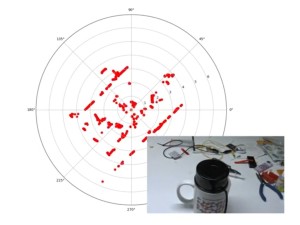You Too Can Have Fun with Lidar
A lidar differs from a radar in using light instead of radio waves to detect remote objects. As prices come down, lidars find use in applications like robotics, drones, and self-driving vehicles.
A lidar differs from a radar in using light instead of radio waves to detect remote objects. A (powerful) light source like a laser illuminates a target and the reflected light is detected. By measuring the time difference between the start of the illumination and the detection, the distance to the object can be calculated. 
Laser distance meters for instance, those you can buy from your local DIY shop, use this method.
When the light is rotated in a plane, a detailed map of the surroundings of the lidar can be created. When mounted on a robot, drone or a self-driving car, these vehicles can use the lidar map to find their way.
Lidar technology used to be extremely expensive, but prices are coming down and lidars are now found in household items like robot vacuum cleaners and lawn mowers. Today, everyone can play with lidar.
In this video Tam Hanna shows how to get started with a low-cost lidar for DIY applications, the TG15 from Ydlidar. A computer, a serial port and some Python code is all that is needed to let it create a graphical 360-degree map of your living room. When nice graphics are not required, a microcontroller is enough to get going.
Read full article
Hide full article
Add a rating to this article
Discussion (0 comments)